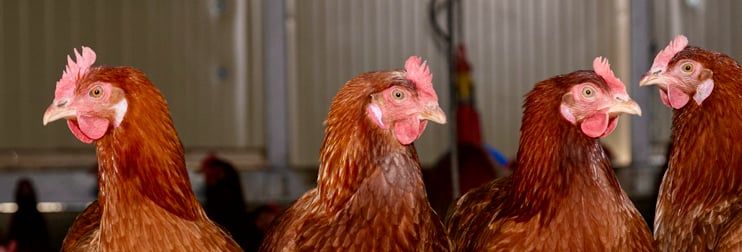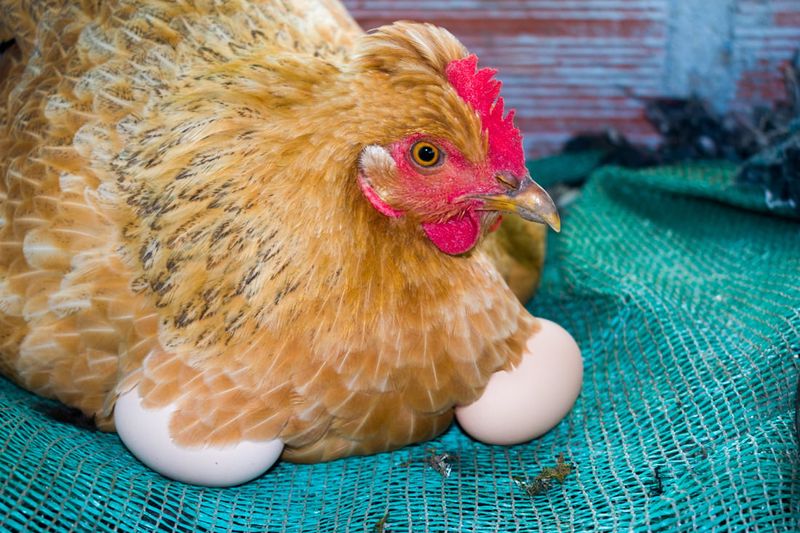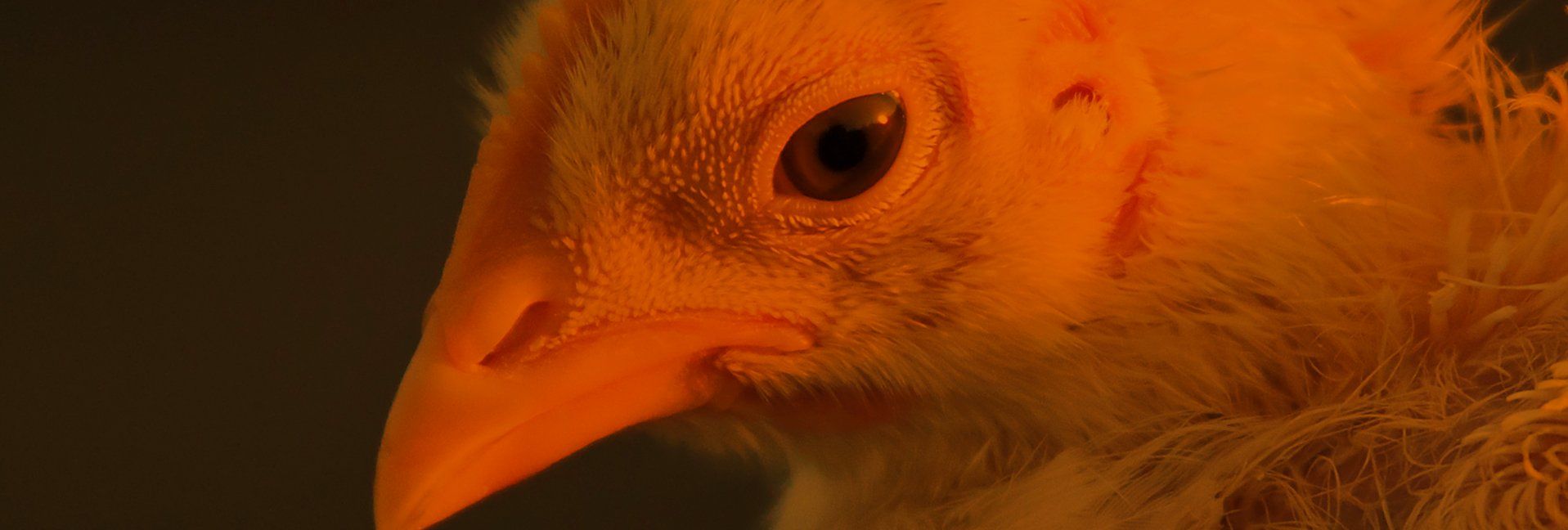Only Have Eyes For You


How do chickens see the world around them?
Of all the senses, sight must be the most delightful.
– Helen Keller
Vision is the most important sense for all birds, including chickens. Hence the reason that birds have the largest eyes relative to their size among all the different species of animal on our planet.
This makes sense in an evolutionary way since good eyesight is essential for safe flight (yes even chickens can fly for short distances).
So what is it like seeing the world through the eyes of a chicken?
The dinosaur chicken
First of all, it’s important to acknowledge the incredible diversity of birds and to realize that the eyes, wings, and other parts are often extremely different from species to species.
To that point, among the vertebrates—amphibians, reptiles, birds and mammals—there are over 10,000 different species of birds compared to roughly four, four and six thousand species of amphibians, mammals and reptiles, respectively.
This diversity has taken hundreds of millions of years. In fact, one way to think of birds is as “dinosaurs that did not become extinct.” The point is, while there are more similarities than differences, don’t think that “all birds see the same.”
As birds and birds of prey, chickens need excellent vision to avoid being another predator’s brunch.
Look all the way around
Chickens need to be able to assess the entire landscape quickly for predators. To that point, chickens can actually see 300 degrees (out of 360 degrees) around because their eyes are on the sides of their heads as opposed to centered like ours.
In addition, chickens can use each eye independently on different tasks simultaneously. Just think of doing your homework and also watching a baseball game at the same time!
Light, dark, and much more
While chickens can see very well, they actually have terrible night vision. This is likely due to the absence of rod cells in their eyes which function well in poor light. This is one reason why we keep our chickens in their coops at night away from owls and other predatory nocturnal birds that have lots of rod cells in their eyes. This is also why when we move chickens, it’s easiest to do this at night when they can’t see well and are sleeping.
While they can’t see well at night, they can see light that we can’t see and in more detail. Specifically, chickens can see in the ultra violet or UV spectrum which we can’t see in.
Wouldn’t it be amazing to see the UV light that is giving us a sun burn! With respect to detail, birds can see oscillations or pulses of light that we can’t.
Keep in mind that many fluorescent bulbs oscillate at a rate that chickens can see. Imagine being subjected to a pulsing strobe light whenever the light is on…
Windows to its soul (if the soul were an egg)
Interestingly, chickens can sense the presence or absence of light through the pineal gland in their head so even an entirely blind bird can still sense daylight. This is one reason why it’s important to make sure chickens don’t get too much light.
Chicks, for example, react negatively to excess light and don’t gain weight adequately when they are exposed to too high intensity light.
Light and eggs
Wait this is an article on eyes, right? Well, laying an egg actually starts with light reacting with the receptors in the chickens eye.
Big picture, light (artificial or real) hits the eye which activates a little gland behind the eye called the pineal gland which sends a hormone to the ovary to release an egg from the ovary and eggs come out of the business end…
Not a bad trade: We give them light and some chicken feed and they give us fresh eggs.

In fact, light is so important in this equation that if birds don’t get enough light—as can be common during the winter—the hen will stop laying eggs until additional light is added either artificially or naturally in springtime.
Roughly speaking, 16 hours of light a day is required to cause enough stimulation of the pineal gland to trigger egg production
What else about eyes?
Veterinarians pay a lot of attention to eyes in order to assess health and disease.
Healthy birds generally hold their head high with bright, open, round eyes, whereas sick birds hold their heads down with the eyelids partially closed. The eyes themselves should not be cloudy and there should be no evidence of discharge.
In summary, chickens eyes are pretty amazing and unique structures. By understanding what makes them unique we can raise them better with less stress and more eggs, which is ultimately a win-win for chicken and owner!
Tags:Pitesky's Poultry

Chicken Whisperer is part of the Catalyst Communications Network publication family.












